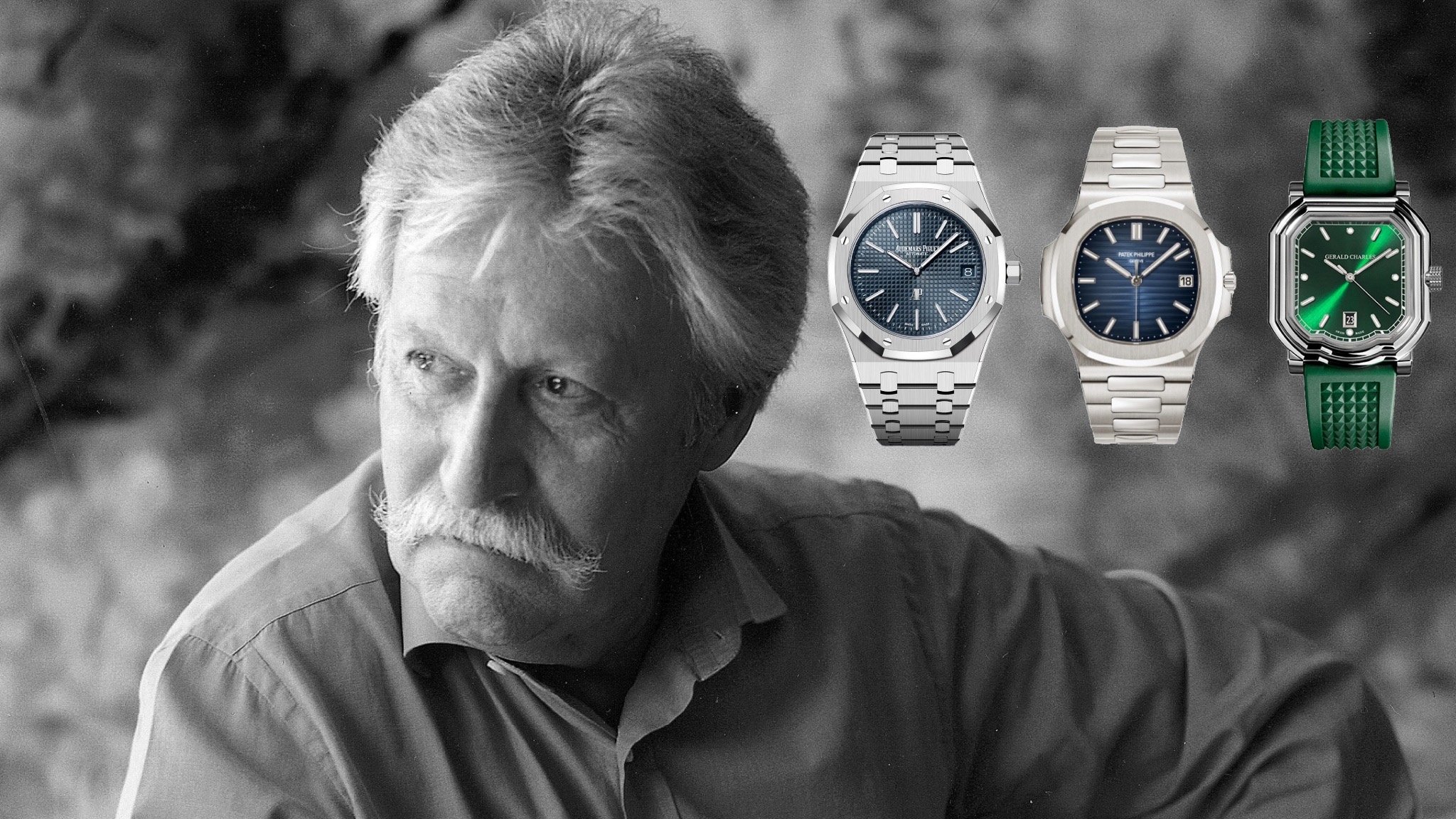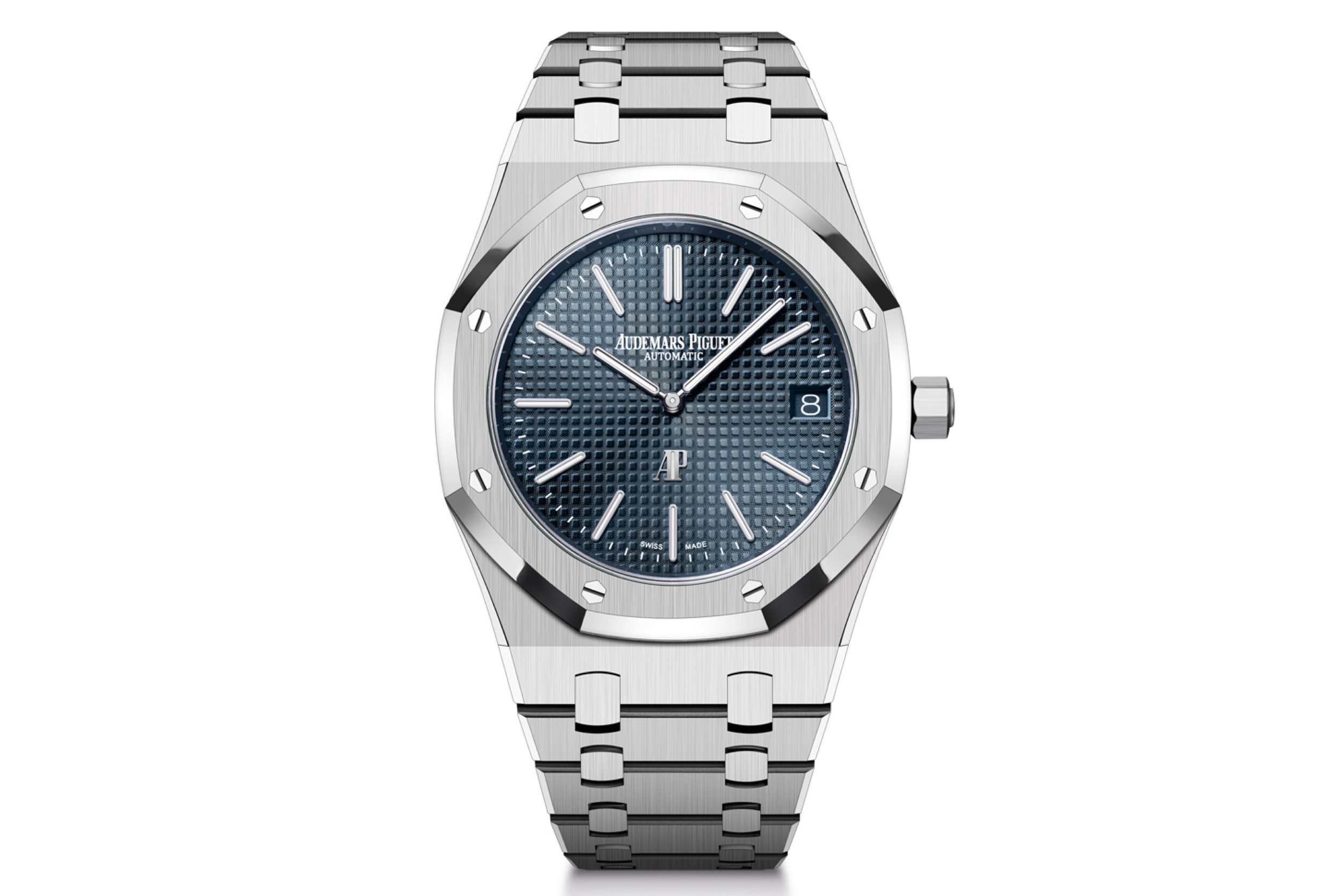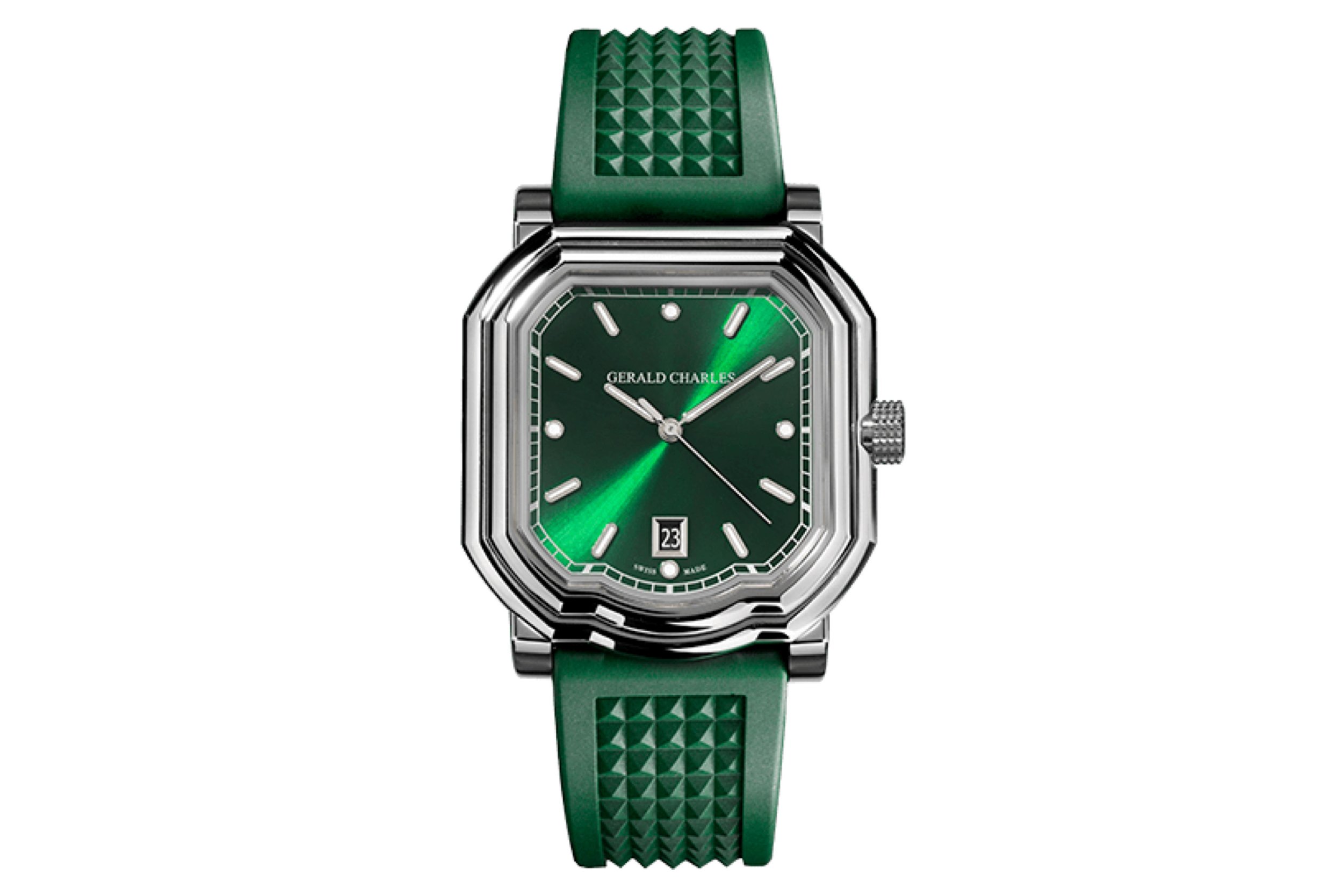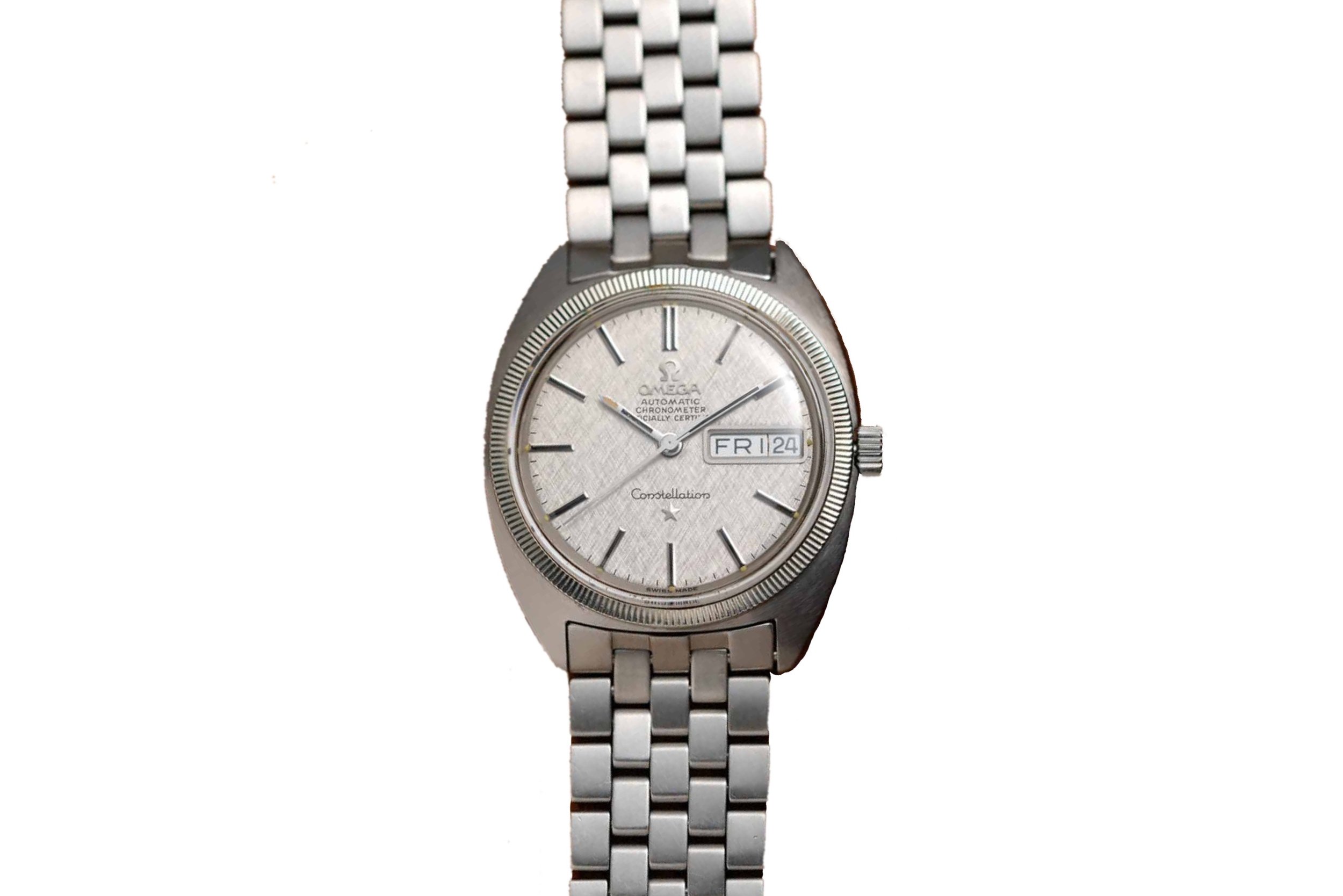A Guide to Gerald Genta Designed Watches
Gerald Genta is one of the most prolific watch designers of all time. Over his illustrious career, he’s designed some of the most well-known and recognizable watches in history. He’s worked with just about every major brand outside of Rolex. He’s designed so many famous models, that it’s often hard to even keep track of what he designed and what was inspired by him. Today, we thought we’d take a look at some of the most iconic watches that Genta has designed and produced, as well as some that many may not know he had a hand in. You can think of this article as a Best Gerald Genta Watches Guide in the same vein as some of our other watch guides. But in reality it’s much more than that. This is more of a buying guide and history of the legendary watch designer’s creations.
Audemars Piguet Royal Oak
The Audemars Piguet Royal Oak may be one of the most notorious watches in the entire industry. In fact, it’s well known for really being the birth of the steel sports watch. By the beginning of 1971, Audemars Piguet started recognizing some downward trends in their market due to the impending Quartz movements coming out of Japan. Yearning to shake things up a bit, they set out to design a new line of watches. The marketing director at Audemars Piguet picked up the phone and called none other than Gerald Genta. Overnight Genta designed the most prolific sports watch of all time - The Royal Oak. It was an unprecedented steel sports watch with an unconventional bezel, and insanely high levels of finishing details. It was unlike anything ever created for it’s time.
The Royal Oak was identified by it’s octagonal bezel with visible screws - Inspired by a divers helmet. And an incredibly complicated (for it’s time) integrated bracelet that was actually finished - Another oddity for the time. Inside was the tried and true Calibre 2121, which you can still find in some of the brands Jumbo models today - Most notably the 15202. The Petite Tapisserie dial was also an oddity, as texture like that was often reserved for gold dress watches. Once produced, the Royal Oak 5702 was unveiled at the 1972 Basel Fair for 3300 Swiss Francs - An obscene price tag for steel. It didn’t immediately gain traction, but as you can see today, absolutely exploded over time.
Obviously, the watch has gone through a number of changes and modernizations than the original. Luckily, you can still get pretty close to the original Royal Oak in 16202. While the movement is updated to keep up with modern standards, it’s nearly identical to the watch presented at the 1972 Basel Fair. Even up until the day he died, Gerald Genta considered the Royal Oak the “Masterpiece of his career”.
Patek Philippe Nautilus
Closely linked to the Royal Oak, was the Patek Philippe Nautilus. After Audemars Piguet unveiled the Royal Oak in 1972, Patek Philippe needed to offer a similar product in their catalog to compete. After holding out to see if a “Luxury Steel” was even capable of being successful, Patek started realizing that the growing success of the Royal Oak inevitably put them in a position to create their own. The challenge was that Patek Philippe was positioned in the precious metal dress watch space, so how do they pivot their marketing to also offer a steel sport watch alongside their precious metal watches without cheapening the brand.
You can guess who they called. It’s actually an interesting story on how he came up with the design. The story goes he was in a restaurant at a table next to some Patek Philippe executives and was listening to their conversations. He asked the waiter for a napkin and drew the first iteration of the Nautilus at a table in the restaurant in “5 Minutes” as Gerald tells it. Gerald Genta sketched a prolific watch that dominated the watch industry for the next 50 years on a napkin.
The Nautilus is designed after a porthole on transatlantic ships. It’s oblong shape is technically octagonal in nature, but is curved to create a circle. Horizontal ribbed stripe patterns were added as texture to the dial, and applied luminous hands and indices were added to give extra utility at night. “Nautilus” was the given name after the Vessel from Twenty Thousands Leagues Under the Sea.
The Nautilus (ref 5700/1) was introduced at the Basel Fair in 1976, and was quickly named “Jumbo” because at 42mm, it was a fairly large size for the time. From there, the Nautilus has gone through a number of evolutions from complications, the dial configurations. Even today, it’s near impossible to get your hands on a Nautilus as the brand makes so few, and they’re allocated way ahead of time. The Nautilus is among one of the most recognizable and prestigious watches the entire industry.
Gerald Charles Maestro
In 2000, Gerald Genta founded the last of his brands in Gerald Charles. It gave Genta the opportunity to design his own watches under his own name. One of the last designs that was produced from Genta himself was the Maestro. The Maestro is unique for a number of reasons. It’s heralds back to a simplicity with it’s dials, but is still concisely a Genta Design.
The case is oblong and the straight top edge is contrasted by the curved bottom edge. It still features the octagonal bezel, but is paired with an octagonal case that’s creased at the bottom. This would normally be a jarring design, but once again, Genta has the ability to take an unconventional shape, and mold it into something beautiful. The dial is a simple sunburst pattern with lume-filled indices and a small date window at 6 o’clock. In order to not segment the dial, the indices at 12, 3, 6, and 9 o’clock are simple dots so that the date window doesn’t detract from the indice design (This goes the same for the Chronograph model subdials).
The watch still adheres to the traditional Genta design, with the case being on the larger side at 40mm, but is remarkably thin at only 8mm. This was a staple of the Royal Oak and Nautilus, and is continued here. The Maestro has gone through a number of iterations and special additions from being gem-set to skeletonized. However the case, the strap (said to be inspired by the pyramids of Egypt), and the design are are quintessentially Genta. The Maestro himself. You can check out the Maestro collection at Gerald Charles’ website.
Universal Geneve Polerouter
At the young age of just 23, Gerald Genta had his first real shot at designing a watch for a major brand. Universal Geneve approached Genta to design a watch to commemorate the Scandinavian Airlines Systems or SAS for short. An interesting flight route, the SAS flew from Copenhagen to Los Angeles by way of the North Pole. So when Genta designed the watch, the name "Polerouter" was settled on. The watch itself is fairly simple with some unique design language. First, the magnetism from the earths rotation absolutely wrecked most timing instruments worn for that route, so anti-magnetism was at the forefront of necessities. From there, the dial was designed with a crosshair and a chapter ring consisting of a coin edge pattern to maximize legibility (since it was sometimes flown in the dark).
Overall, it's a rather unassuming watch at just 34.5mm but it's history and the fact that it's really the first real watch Genta ever designed, has put it at the forefront of vintage watch collectors. The watch had gone through a number of iterations over time, but was still firmly marketing as a tool watch alongside the Rolex Explorer and priced similarly. Now however, on the vintage markets, you can find the watch starting at around $2,000 USD with the price increase based on condition.
Omega Constellation
At the turn of the 50’s, Omega was seeing a stall in it’s flagship model, the Constellation. The watch was largely considered a dress watch for Omega, and some of the more generic models in their catalog. In 1959, Omega needed to revamp the line to keep it successful. So they approached Gerald Genta to take a look at the collection and add some fresh aesthetics to the line.
The Constellation was a pretty integral, although simple design. Genta came up with a plan to revitalze the design by created a new shape for the case. This became know as the “C-Case” inspired by more otherworldly designs from which the Constellation gets its name.
The Constellation has seen quite significant shifts over the years, and the brand has moved away from the Genta design almost entirely. The Genta Constellation is fairly rare to happen upon, and tends to find it’s ways into vintage collectors circles. Still, it’s yet another beautiful design from Genta.
Genta Mickey Designs
By 1969, Genta had founded his own brand. He wanted to create timepieces that were wildly different from what was being made at the time. Sure he has some unique staples in his belt with the Nautilus and Royal Oak by then, but what could be the next step to set himself apart from others in the space? How about Cartoon Characters?
Genta approached Disney in the early 80’s about putting various characters on his dials. Which were already a unique shaped case. What came out of the partnership was a slew of Disney themed watches with a number of various complications. Some included jumping hours and retrograde minutes. What became the most famous part of the watches, was that the beloved characters hand was used as the minute hands. So for instance, Mickey is pointing at the minute, while the hour is displayed in a small Window.
The watches truly became loved in their own right in the industry. Which wasn’t exactly predicted because they were priced upwards of $5,000 right out the gate. And that price only increased with other features like precious metals and diamonds. Still, the watches are still sought after today in the secondary markets, and fetch quite a premium.
Interestingly, Bulgari has recently released a tribute watch to Bulgari in their Arena collection. Featuring a jumping hour and retrograde minutes, the piece harkened back to Genta's designs from this era. Of course, on the dial, is a happy Mickey Mouse, enthusiastically pointing at the minutes.
One of the Mickey designs by Genta.
IWC Ingenieur
In the 1950's, IWC had designed a bold, albeit fairly reserved watch called "The Ingenieur" literally meaning "The Engineer". The watch sold moderately well, but as time went on, it became a lot les modern of a timepiece, and felt dated. By the mid-70's, IWC needed a change, and tapped Genta to redesign the Ingenieur for a more modern audience.
Genta immediately started with case size. He beefed it up to 42mm and removed the thick steel case of the original. He opted for a more sporty design, with a more streamlined steel case and bezel. It finally came on a thick steel integrated bracelet, and of course, exposed screws on the bezel - A trend with Genta's designs.
The watch was essentially a complete redesign, and the results spoke for themselves. The watch was carried into the late 80's with Genta's design, and you can even see some of it continued into IWC's current Ingenieur Collections. Overall, the challenge of designing a watch for engineering professionals proved not at all that difficult for Genta.
Bulgari-Bulgari
Genta was tapped by Bulgari to create a unique design for their Rome-based jewelry atelier. Being modeled after an ancient Roman coin, Genta really created one of the most iconic watches in the Bulgari catalog. It was a simple design, with an unusual shape that people really identified with. Hence, the Bulgari-Bulgari was born. While Bulgari had initially planned for it to be a hit for Bulgari-Roma, it resonated worldwide with far-reaching impacts.
The model became a huge success, and eventually Bulgari had picked up Gerald Genta's company in the early 2000's. They immediately began work on producing models under the Bulgari name. Many of them, directly influenced by the Bulgari-Bulgari.
Bulgari Octo
The Bulgari Octo is a complicated and controversial design to be credited to Genta. In fact, it’s still argued about whether he actually designed it, or Bulgari was just inspired by his eight-sided dimensional design language. What can be said, however, is that it’s quintessentially Genta inspired, if not outright his design.
In 2000, Bulgari bought Genta’s company, and therefore the rights to his designs. Shortly thereafter, the Octo in it’s current form was released. It featured a more brooding and blocky steel case with an avante-garde shape and texture. It would be no surprise to anyone if this was a design in Genta’s rolodex that Bulgari happened upon and therefore, the Octo took shape (no pun intended). The dial is fairly simple, and the case is absurdly complex - A hallmark of Genta style. At the end of the day, the Octo is a classic watch that’s spawned many iterations of itself over the years.
Cartier Pasha
By the mid-80's, Gerald Genta had already had a pretty illustrious career. He was nicknamed "The Maestro" and brand's were clammoring to get his hands in their designs. Cartier eventually tapped him to recreate The Pasha - A staple watch of the brand, but had aged in a more dressy direction. They wanted a new design that was bold, and statement-making - On top of that, Round. And since most of Cartier's inventory was various shapes again round, they asked Genta to design the Pasha with a more sporty design language.
Of course, he did, and this time, in Gold. In fact, he really opened the door for Cartier in the realm of round watches - Something they hadn't really dabbled in over the course of the brands history. The brand mostly had oval and squared off pieces in their history. Genta kept a number of the design queues from the original Pasha, including the unique Vendome lugs, and Cartier's signature Blue Sapphire. The model was a raving success, and to this day you can still find the Pasha De Cartier with the same design queues Genta implemented in the 80's.
Gerald Genta Grand Sonnerie
By 1995, Genta was areguably the most well-known designer in the watch industry. So he wanted to do something new and different, and complicated. It took 5 years of research and developement, but Genta unveiled a crown-jewel in watch making with the Grande Sonnerie - A design Genta came up with, with a movement Pierre-Michel Golay of Franck Muller fame produced.
The watch, at the time anyway, was considered one of the most complicated watches in the world. It utilized over 1000 parts and a dizzying array of complications, including a Westminister Four-Hammer chime. Further, it was also a Perpetual Calendar. It was a mark that Genta had come a very long way as a designer. From the Royal Oak and the Nautilus' more brooding and utilitarianist approach to luxury in steel, the Grande Sonnerie was a testament to the fact that Genta was still capable of ultra-complication.
The actually number of these watches that were designed and created by Genta is a little convoluted, but they expect that around 25 of these were ever produced - Each with an original design. You can bet if you were a serious collector with seriously deep pockets, the Grande Sonnerie was on your radar. The watch retailed for around $900,000 USD back then but many considered it a small price to pay for a piece unique directly from Genta himself.












